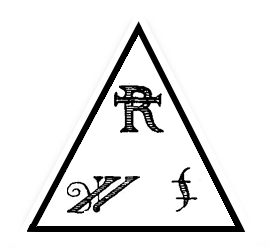Tags
Classical, Instrument, Lessons, Music, Musical, Orchestra, Pedagogy, Strings, Student, Symphony, Teacher, Teaching, Varnish, Violin
Balsam, alizarin, linseed oil,
Bring this cauldron to a boil,
Resin, pitch, and madder root,
Amati stradi del gesu!
*POOF!!*
Wouldn’t it be great to just conjure up your perfect violin like a whimsical music student at Hogwarts? Although magic can be made from the fanciful sounds emanating from a well played instrument, unfortunately a violin can not be created in a medieval laboratory… or can it?
Did you know that the making of violins is inseparably linked to alchemy? The symbol at the top of this page is the ancient alchemical symbol for varnish. And all of the ingredients that make up my enchanted little spell are all items you will find in a modern day varnish maker’s workshop. Consequently, most of the varnish recipes of today are the same ones you would find in the alchemist and apothecary laboratories of old!
I must admit, I had to do some new research on the subject of violin varnish to write this post. But it was most fruitful! I am consistently amazed at how most of the traditions, materials, and know-how from hundreds of years ago still apply to modern violin making. However, unlike the other subjects I’ve covered already, violin varnish is by far the most fascinating because just like in the past, the actual art of its creation still seems to be a carefully guarded secret. Each maker seems to have their own specific blend of ingredients.
Without going into too much detail, let’s go over what varnish actually is. Varnish is quite simply a combination of tree resin, a solvent, and a drying oil. Natural pigments, like madder root, can also be added to produce a certain color. What’s called a spirit varnish can be made by replacing the oil component with an alcohol-based one. This allows the varnish to dry by evaporation, while oil-based varnishes cure and harden by exposure to ultraviolet radiation, either by the sun or artificial lighting. You know that solid, brownish-colored rosin that you apply to your bow? Just think of that boiled down to a liquid and spread across the whole body of your violin like a thin skin until it hardens. Pretty neat, huh? Well, if you are a science geek like me, it is. The rest of you are probably just waiting to hear just what the heck varnish has to do with finding a good violin!
Ok antsy pants, let’s get right into it then! First and foremost violin varnish is meant to protect the instrument. It completely seals the spruce and maple wood grains of the violin, defending it against dirt, oil, and the natural elements that would rapidly deteriorate it. Without a preserving layer of varnish, all those Stradivarius violins that you would like to own one day would have been nothing more than fertilizer by now. If you are familiar with the gemstone amber, that is simply fossilized tree resin. (Amber is also where dinosaurs come from ;)) While your violin is not a fossil, the varnish applied to it acts very much in the same way.
The secondary use of violin varnish is of course to give the bare spruce and maple wood a pleasing color and to add a glossy or semi-glossy coat to it. There are many types of pigments and application techniques that can be used to achieve this. And while the color or sheen has no significant impact on the overall sound of the violin, it can influence your decision on purchasing one, which is quite alright. While previously mentioned in the post about maple, I think most of us can agree that we would like a violin that is as pleasing for us to look at, as well as play.
One other visual aspect to note about violin varnish is that it creates what’s called a lensing effect. Because varnish is clear, and because of the unique properties it possesses, applying it to the spruce and maple wood body of the violin gives it a translucent appearance and the illusion that you are actually looking into the grain of the wood! Just like magic! EXPECTO PATRONUM!!
While out shopping for a violin, you probably won’t be much interested in a violin’s varnish outside of it color – and for the most part, you won’t have to. But just in case you do come across a questionable instrument, there are a few things the varnish can tell you. If it is applied too thickly, it can actually dampen or constrict the sound produced from the violin. While difficult to see, you may be able to notice it when playing. You’ll also want to look for an uneven application or brush strokes in the varnish as well. This may not affect the sound so much, but will lesson the overall aesthetic quality of the instrument. Finally, you will want to see that there are no bare wood spots where the application of varnish was missed. Even though this is almost unheard of today, this is something you may notice on violins found at places like flea markets or otherwise refurbished ones.
I bet you never thought you’d learn so much about a violin’s varnish, did you? Neither did I, actually. It’s really all quite fascinating! But now that Alchemical Music class is over, let’s grab our broomsticks for a game of Quidditch!
RICTUSEMPRA!!
Visit lukonisviolins.com for the official website of Lukonis Violins.

